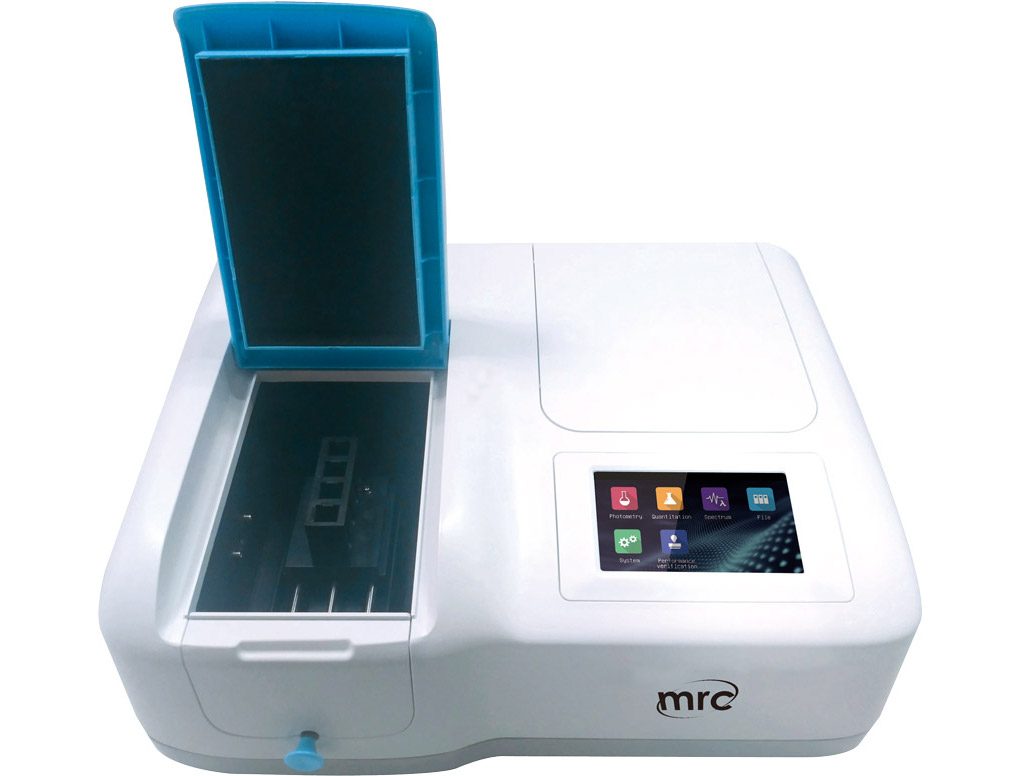Single-beam and double-beam spectrophotometers are both instruments used to measure the absorbance or transmittance of light by a sample. However, they differ in their design and functionality.
Single-beam spectrophotometer:
In a single-beam spectrophotometer, only one light beam is used to measure the absorbance of the sample.
The light source emits a beam of light which passes through a monochromator to select the desired wavelength.
The light then travels through the sample and reaches a detector that measures the intensity of light transmitted through the sample.
Single-beam spectrophotometers are generally simpler in design and less expensive compared to double-beam spectrophotometers.
Double-beam spectrophotometer:
In a double-beam spectrophotometer, the light path is split into two beams: a sample beam and a reference beam.
The sample beam passes through the sample, while the reference beam passes through a reference material or a blank solution.
Both beams then reach their respective detectors, and the absorbance or transmittance of the sample is calculated by comparing the intensity of the sample beam with that of the reference beam.
Double-beam spectrophotometers offer better accuracy and precision in measurements compared to single-beam spectrophotometers, especially when dealing with samples that may change over time or have a tendency to drift.
